
THE VAYU PURANA: 2 Volumes
Book Specification
| Item Code: | IDE900 |
| Author: | Translated and Annotated By. Dr. G.V.Tagare |
| Publisher: | Motilal Banarsidass Publishers Pvt. Ltd. |
| Language: | English Translation |
| ISBN: | Part I 8120803329; Part II 8120804554 |
| Pages: | 1066 |
| Cover: | Hardcover |
| Other Details | 8.8" X 5.8" |
| Weight | 1.56 kg |
Book Description
This thirty-seventh volume in the series on Ancient Indian Tradition and Mythology constitutes the first part (Purvardha) of the Vyu Purana of which the second part (Uttarardha) also is in press and will follow shortly as the thirty-eighth volume. This part contains the English translation of Chapters 1-61 comprising the first two Padas or Sections out of the total four Padas into which the Purana is divided, viz. Prakrya, Upodghata, Anusanga and Upasainhara Padas.
The project of this series was envisaged in 1970 by the late Lala Sundar Lal Jam of Messrs. Motilal Banarsidass. Thirty- seven volumes of the series, including the present one, have so far been published and others are in progress. Complete sets of ten major Purai)as, viz. Agni, Bhagavata, Brahma, Brahmanda, Garug’a, Karma, Linga, .Yidrada, Siva and Varaha have already been made available in English to the lovers of ancient Indian wisdom and it is hoped that this eleventh one, Vãyu Purãna, will also be complete much before the end of the year.
The Vayu or Vayaviya Puraua gets its name from the Wind-god who is said to be its promulgator, and it is a Saiva Purana in the sense that it has been composed for the propagation of devotion to and worship of god Siva. It discusses the well known five topics of the Puranas, viz, creation, dissolution and re-creation, genealogy of gods, sages etc., periods called Manvantaras, and description of royal dynasties. In the present part cosmogony is discussed in great detail and a good deal of geographical material is found. The translation is preceded by a long scholarly Introduction highlighting the salient features of the Purãna.
It is our pleasant duty to put on record our sincere thanks to Dr. R. N. Dandekar and the UNESCO authorities for their kind encouragement and valuable help which render this work more useful than it would otherwise have been. We are extremely grateful to Dr. G. V. Tagare for translating the text and contributing the Introduction. We are also thankful to all those who have been helpful in our project.
This close cousin of the Bd. P (brahmanda Purana) is one of the oldest and authoritative Puranas, Nibandhakaras (writers on Dharma Sastra) like Apararka Ballalasena, Devana Bhatta Profusly quote it one Sraddha Dana, Tirtha, Asrama etc, Designating their sorce as Vayaviaya. They use this term to imply this Purana and not the Vayviya Samhita in Siva Purana. It is called Vayu or Vayaviya as Vayu narrated it to elucidate Dharmas and the glory of Rudra and it pertains to Sveta Kalpa. The Va. P (Vayu Purana) states that it consists of 12000 verses and is divided into four padas.
The traditional division is into four parts (padas) of unequal length as can be seen below:
I. Purvardha
1 . Prakriya Pada (Chs. 1-6)
2. Upodghata Pada (Chs 7-64)
II. Uttarardha (chs. 1-3 Upodghata pada) and
3. Anusanga Pada (Chs. 4-37)
4. Upansamhara pada (Chs. 38-42 and includes Gaya Mahatmya 43-50)
A (Anandasrama edt. Of the Va.P) follows the older tradition and does not divide the text into Puravrdha and Uttarardha and gives the following break up into four padas:
1. Prakriay (chs. 1-6)
2. Upadghata (chs. 7-64)
3. Amsanga (chs. 65-99)
4. Upasamhara (Chs. 100-112)
In this break up the problem of spilling over three chapters of Upodghata Pada (Chs. 62,63,64 in A) into Uttaradha (as Chs. 1-3) does not arise.
Even our text states that the original Samhita was divided into four Padas (1.61.5). Later on it specifically confirms it and states that Vayu god is its narrator.
The wind god himself has narrated this popular Purana consisting of four Padas viz Prakriya the first section where the story is taken up (the other or sections being) Anusanga Upodhata and Upasamhara.
The division of the purana into purvardha and Uttarardha is of a later date.
The original Va. P ended with Ch. 41 of Uttarardha (ch. 103 in A). The sages who listened to Suta’s narration of the Va. P expressed their satisfaction at the narration of the Va.P. They gratefully honored the suta. The end of the narration of the purana and the conclusion of the sacrificial session at Namisaranya synchronized. The sacrificers had their valedictory bath and they went to heaven.
The last redactor of this Purana exhorts his listeners to worship deities perform sacrifices and go to heaven at the end of the life.
The same chapter traces the genealogy of teachers who transmitted the text of the Va.P from god Brahma to Suta and Samsapayana (II.41.58-66). After stating the fruit of listening to this Purana and laying down prohibition of the transmission of the Purana of undeserving persons the author concludes the Purana with salutations to the lord Mahesvara.
As shown in the notes to II.42 that chapter is a later accretion it comes after Phala-Sruti accepts Adhyasavada (vv.30-31) of Sankara quotes from the spandakarika of Vasugupta and advocates Kashmiri Trika Saivism brings in Radha Krsna cult (vv.44-45) and Vyasas dejection after completing (so called) eighteen Puranas which is an echo of Bh.P I.4.26-31 and subsequent chapters one wonders why the agni P. Visnu P and Linga P. which are uniformly found in the standard lists of Puranas are deleted here and one Adi Purana is added to the list.
About the number of verses no criticism in necessary as these Purana writers depend on hearsay or traditional information in this matter and did not count the verses. It may how ever be argued that these numbers of verses actually existed then in the MSS of Puranas available to those Purana redactors. Gaya Mahatmay (II, Chs. 43-50) is obviously an interpolation. The motive of this interpolation may be synthesizing Saivism and Vaisnavism. The Va.P mainly advocates Saivism and to counter balance it. Gaya Mahatmya which emphasizes Vaisnaism appears to have been added here. This mahatmya has a nominal tenuous connection with the Vayu P. only the first verse of the Mahatmya is attributed to Vayu. The real interlovutors are Narada and sanatkumara.
Moreover a considerable number of verses are common to this Gaya Mahatmya and those in the Mbh, Vana Chs 84-95 Np. Uttarabhaga Cha 44-47 Gp Chs 82-86 AP, 114-116 Kp II 35 it shows that there must have been an independent work called the Gaya Mahatmya form which these Purans borrowed these verse.
| PART ONE | ||
| Preface | vii | |
| Abbreviations | xiii | |
| Introduction | xv | |
| Chapters | ||
| 1. | Summary of Contents | 1 |
| 2. | A Sacrificial Session of Twelve Years | 22 |
| 3. | Origin of Creation | 26 |
| 4. | Origin of Creation (continued) | 29 |
| 5. | Origin of Creation (continued) | 37 |
| 6. | Origin of Creation (continued) | 42 |
| 7. | Transition between two Yugas (Ages) | 51 |
| 8. | Four Stages of Life | 58 |
| 9. | Creation of Devas and Others | 76 |
| 10. | Manvantaras | 86 |
| 11. | Pasupata Yoga | 93 |
| 12. | Evil Portents and Calamities in Yoga | 98 |
| 13. | Supreme Power of Yoga | 102 |
| 14. | Pasupata Yoga | 104 |
| 15. | Pasupata Yoga (continued) | 108 |
| 16. | Purity and Conduct of Life | 110 |
| 17. | Attainment of the Ultimate State of Life | 112 |
| 18. | Procedure of Expiation for Recluses (Sannyasins) | 113 |
| 19. | Evil Omens Foreboding Death | 116 |
| 20. | The Characteristics of Attainment of Omkara | 119 |
| 21. | Review of Kalpas | 123 |
| 22. | Number of Kalpas | 130 |
| 23. | Incarnations of Mahesvara | 133 |
| 24. | Hym to Siva | 150 |
| 25. | Birth and Death of Madhu and Kaitabha | 164 |
| 26. | Origin of Sounds | 171 |
| 27. | Names and Bodies of the Great Lord | 176 |
| 28. | Families of Sages | 182 |
| 29. | Progeny of Agni | 185 |
| 30. | The Curse of Daksa | 191 |
| 31. | The Race of Devas | 218 |
| 32. | Characteristics of Yugas | 224 |
| 33. | Progeny of Svayambhuva Manu | 230 |
| 34. | Geography of Jambudvipa | 236 |
| 35. | Jambudvipa (continued) | 245 |
| 36. | (Geographical) Arrangement of the World | 249 |
| 37. | Arrangement of the World (Valleys and Lakes) | 252 |
| 38. | Valleys between Mountains | 255 |
| 39. | Abodes of Devas | 261 |
| 40. | Boundary and the Limits of Mount Devakuta | 265 |
| 41. | Description of Kailasa | 267 |
| 42. | The Divine Rivers | 274 |
| 43. | Description of Bhadrasva | 280 |
| 44. | Description of Ketumala | 283 |
| 45. | Description of Bharatavarsa | 285 |
| 46. | Description of Kimpurusa Varsa | 301 |
| 47. | Descent of the Ganga | 304 |
| 48. | Countries of the Jambudvipa | 311 |
| 49. | Description of Plaksa Dvipa and other Dvipas | 314 |
| 50. | The Nether-worlds: Manifestation of the Luminaries | 329 |
| 51. | Movements of the Luminary Bodies | 347 |
| 52. | Movement of Dhruva | 355 |
| 53. | Arrangement of Luminaries | 362 |
| 54. | Hymn to Nilakantha | 373 |
| 55. | Hymn to the Linga of Siva | 383 |
| 56. | Description of Pitrs | 388 |
| 57. | The Cycle of Yugas: Their Characteristics | 396 |
| 58. | Description of the Four Yugas | 408 |
| 59. | Yugas and Classes of People: Lineage of Sages | 419 |
| 60. | Description of Holy Places: The Death of Sakalya | 429 |
| 61. | Lineage of Prajapati | 436 |
| PART TWO | ||
| Preface | vii | |
| Abbreviations | xiii | |
| Chapters | ||
| 1. | Manavntaras: The Milking of the Earth | 457 |
| 2. | The Dynasty of Prthu | 474 |
| 3. | Vaivasvata Manvantara: The Marica Creation | 479 |
| 4. | The Race of Prajapati: Rebirth of Seven Sages | 483 |
| 5. | The Race of Dharma | 497 |
| 6. | Curse to Jaya Gods: Nrsimha Incarnation: Race of Hiranyakasipu: Birth of Marut-gods | 510 |
| 7. | The Race of Kasyapa: Danu's Progeny | 522 |
| 8. | Dynastics Descended from Kasyapa | 525 |
| 9. | The Race of Sages | 553 |
| 10. | The Procedure of Sraddha | 561 |
| 11. | The Birth of Skanda: Rules Prescribed for Sraddha | 569 |
| 12. | The Procedure of Sraddha (Continued) | 580 |
| 13. | The Procedure of Sraddha Performance (Continued) | 584 |
| 14. | The Procedure Regarding Performance of Sraddha: The Five Mahayajnas | 591 |
| 15. | Sacred Places for Sraddha | 596 |
| 16. | The Sraddha Ritual: Purificatory Rites | 610 |
| 17. | The Test for Eligibility of a Brahmana (for Sraddha Invitation) | 618 |
| 18. | Benefit Derived from Charitable Gifts | 627 |
| 19. | Benefit of Sraddha Performance on Various Tithis | 633 |
| 20. | Benefit of Sraddha Performance under Different Constellations | 636 |
| 21. | Miscellaneous Topics: Qualifications of a Brahmana for Sraddha-gifts: Merits of Performance of Sraddha at the Sacred Places | 638 |
| 22. | The Race of Varuna: Birth of Asvin-gods | 649 |
| 23. | Creative Activity of Manus: The Story of Sudyumna | 656 |
| 24. | A Dissertation on Music: The Definition of Murcchana | 659 |
| 25. | The Science of Music: The Embellishments | 666 |
| 26. | The Iksvaku Dynasty | 672 |
| 27. | The Nimi Dynasty | 691 |
| 28. | The Nativity of Soma and Saumya (Budha) | 694 |
| 29. | The Lunar Race: The Amavasu Dynasty | 698 |
| 30. | The Origin of Dhanvantari; Varanasi Cursed; Raji's Exploits | 708 |
| 31. | The Story of Yayati | 717 |
| 32. | The Birth of Kartavirya | 727 |
| 33. | The Dynasty of Jyamagha and Vrsni | 732 |
| 34. | The Race of Vrsni | 737 |
| 35. | Wars between Suras and Asuras: Bhrgu cures Visnu: The Eulogy of Sambhu by Sukra758 | |
| 36. | Glorification of Visnu's Greatness | 778 |
| 37. | Royal Dynasties | 789 |
| 38. | The Manvantaras and Dissolution of the Universe | 827 |
| 39. | Worlds from Maharloka to Siva's City | 846 |
| 40. | Dissolution of the Universe | 877 |
| 41. | Recreation of the Cosmic Egg | 891 |
| 42. | Dissipation of Vysa's Doubts | 899 |
| 43. | The Greatness of Gaya | 910 |
| 44. | The Glory of Gaya: The Story of Gayasura | 916 |
| 45. | Gayamahatmya (Contd.): The Story of Sila | 924 |
| 46. | Gayamahatmya (Contd.): Sila-tirtha and Other Sacred Spots | 929 |
| 47. | Gayamahatmya (Contd.): The Glory of Adigadadhara | 942 |
| 48. | Procedure of the Pilgrimage to Gaya | 947 |
| 49. | Procedure of the Pilgrimage at Gaya (Continued) | 954 |
| 50. | The Glory of Gaya | 965 |
| INDEX | 973 | |
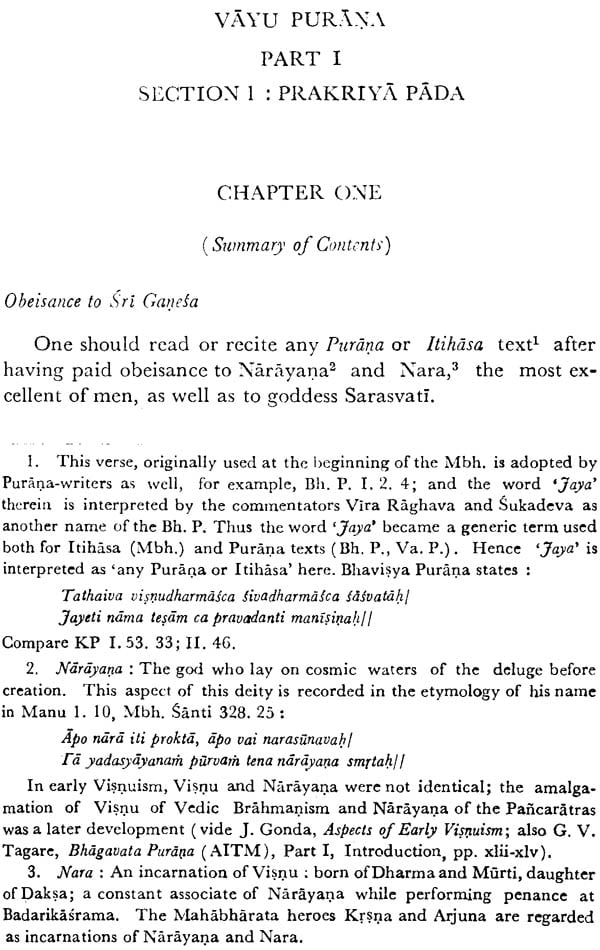
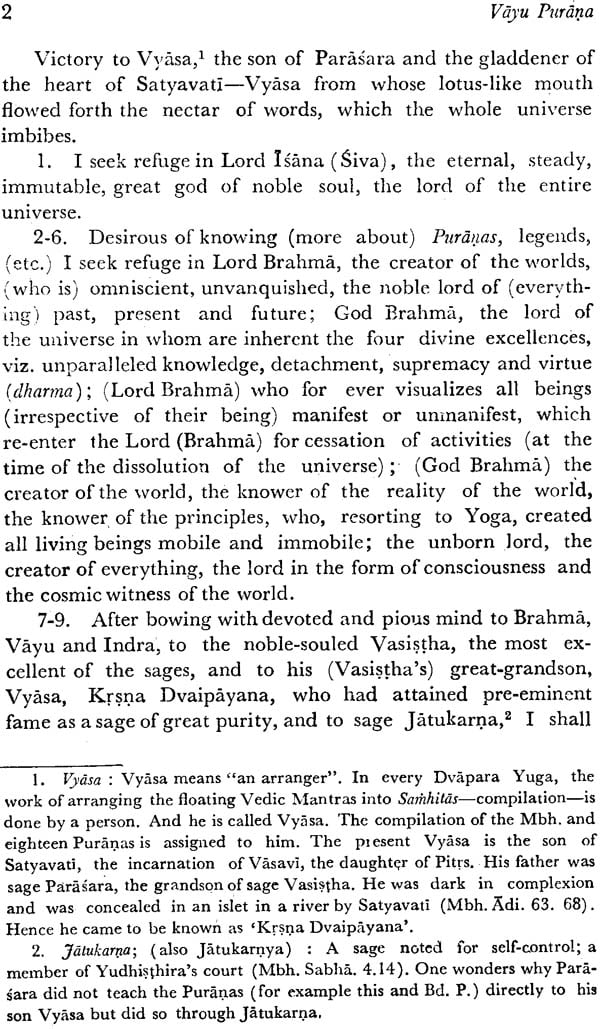
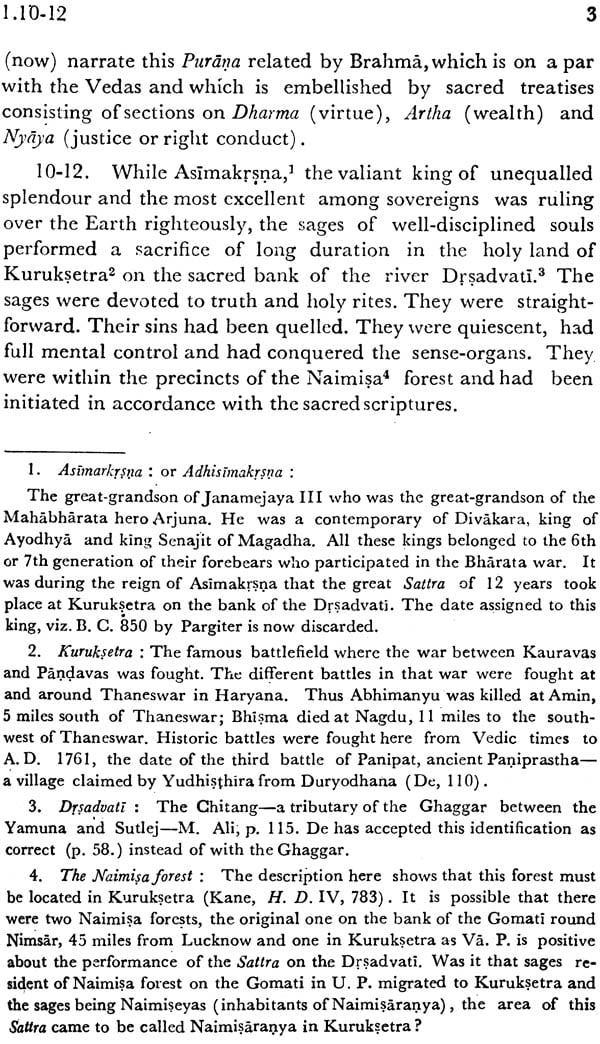
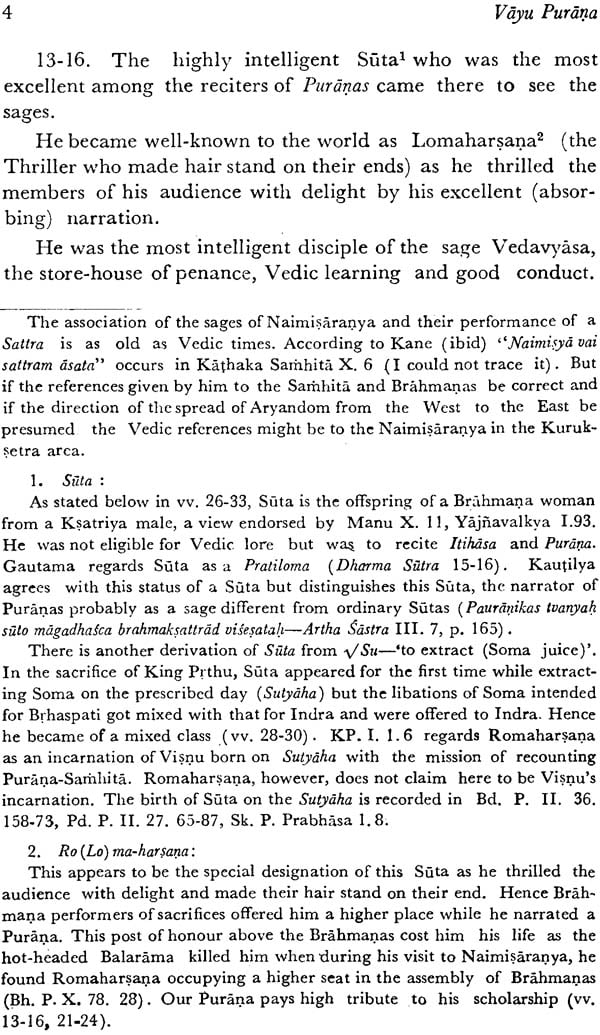
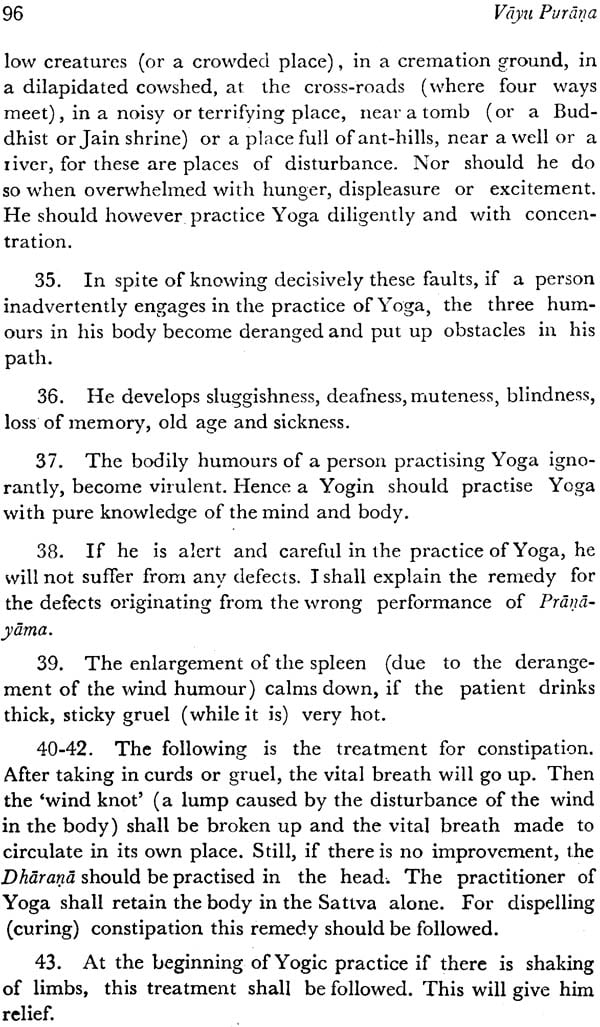
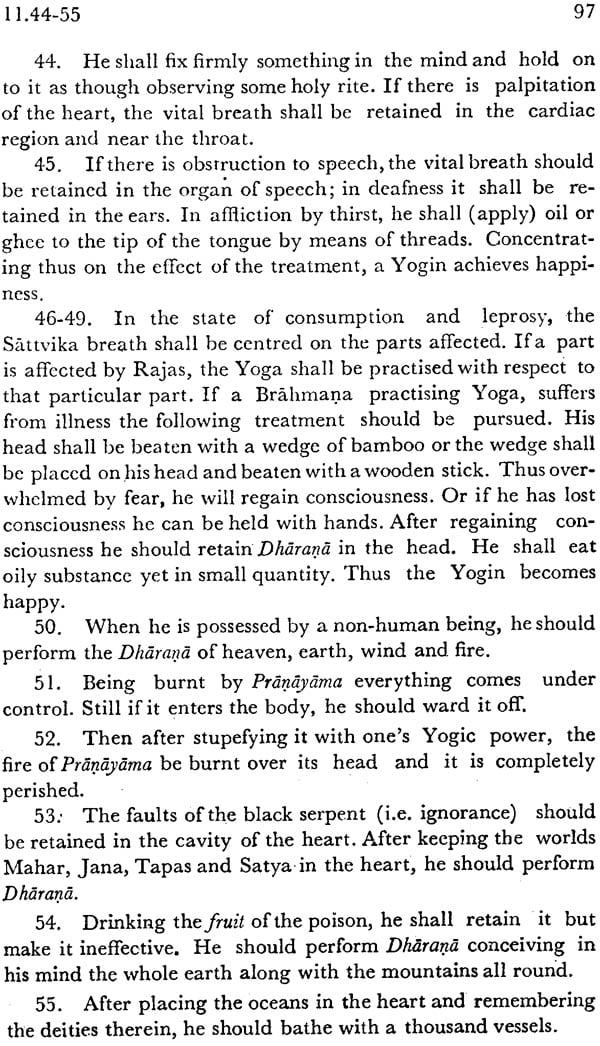
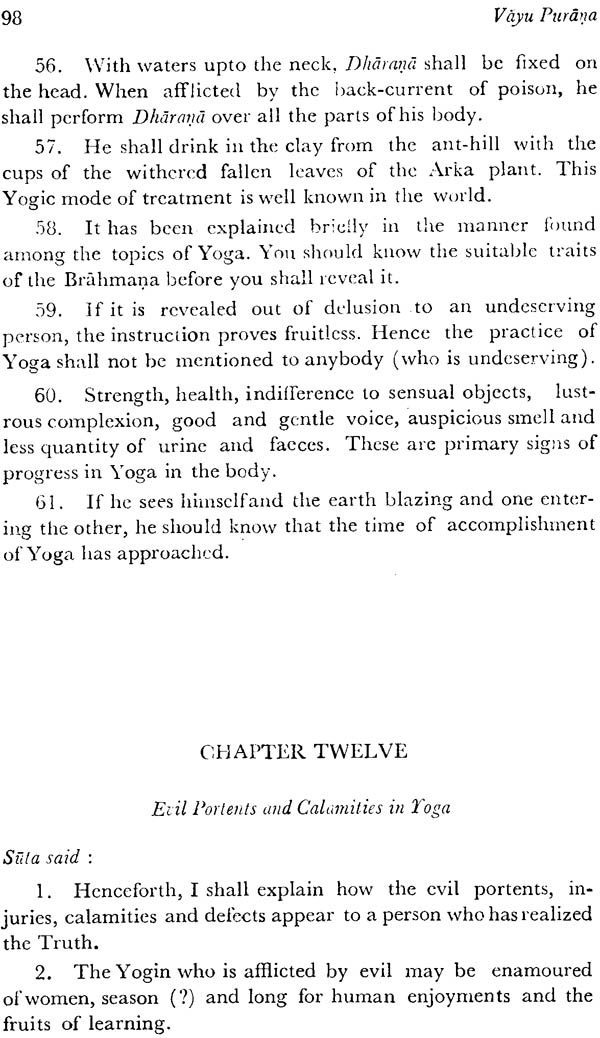
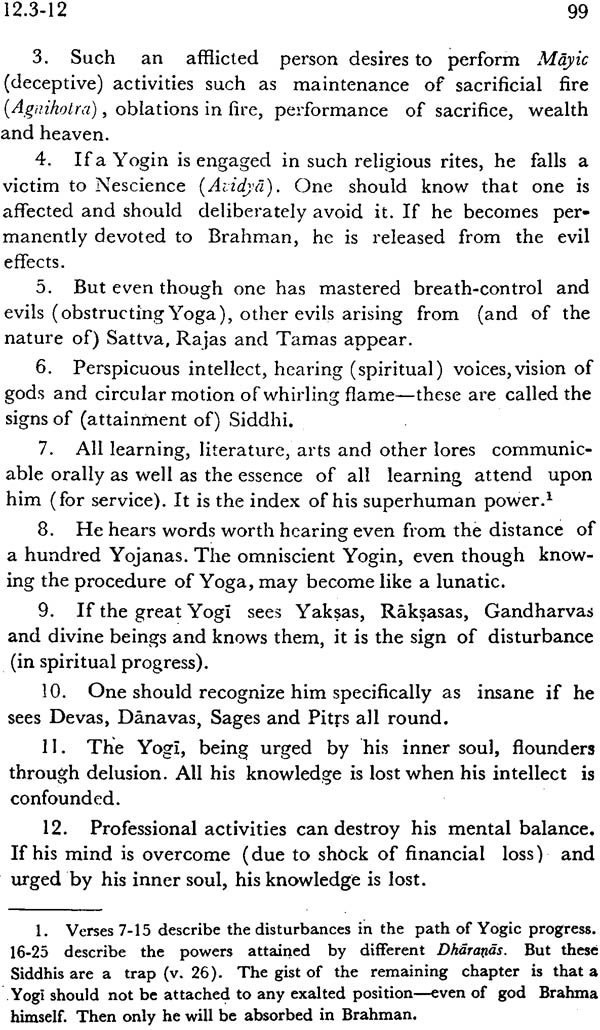
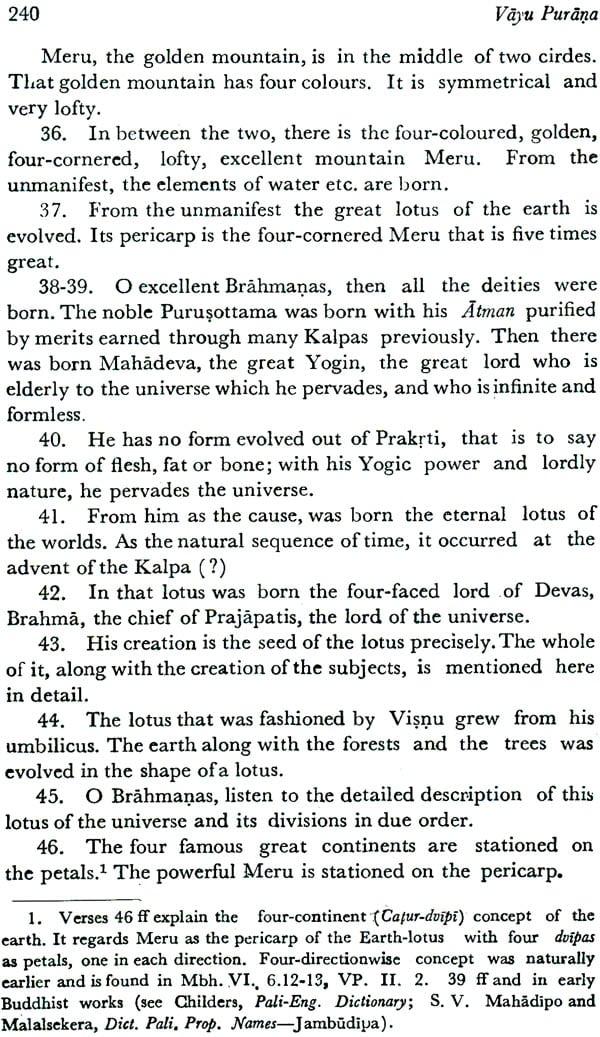
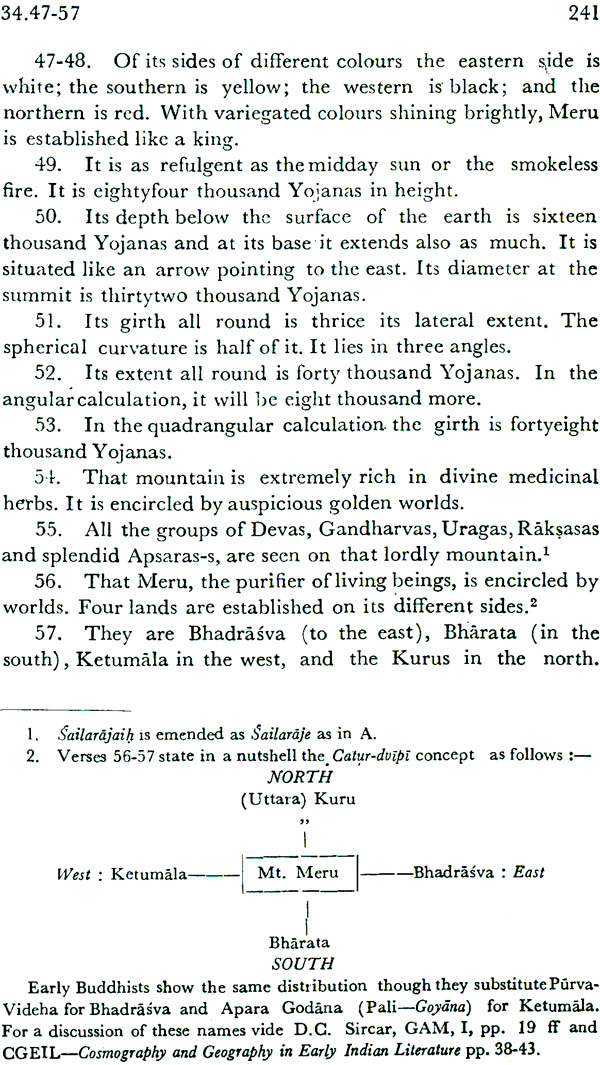
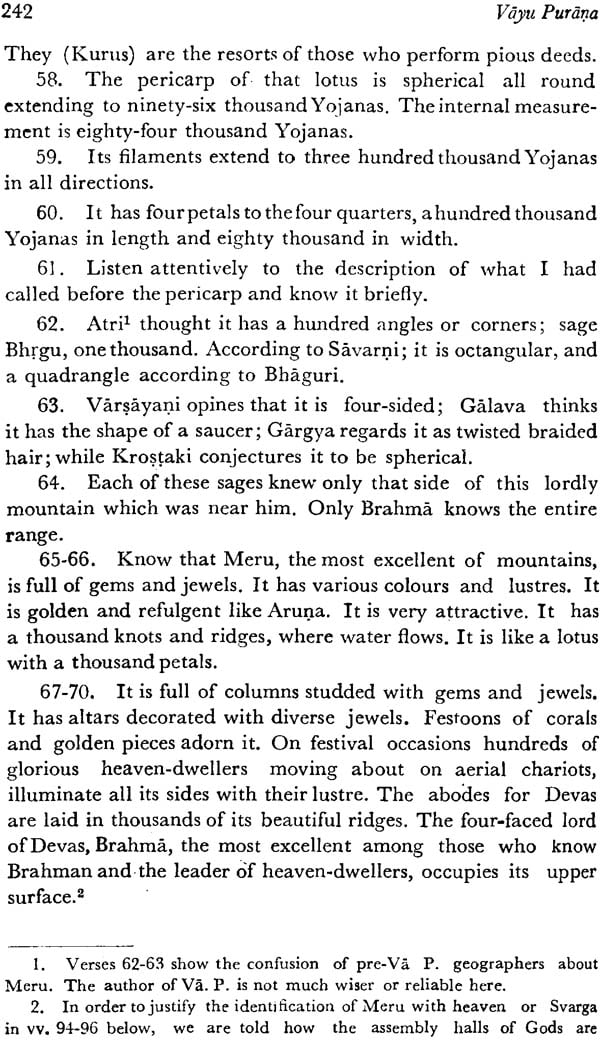
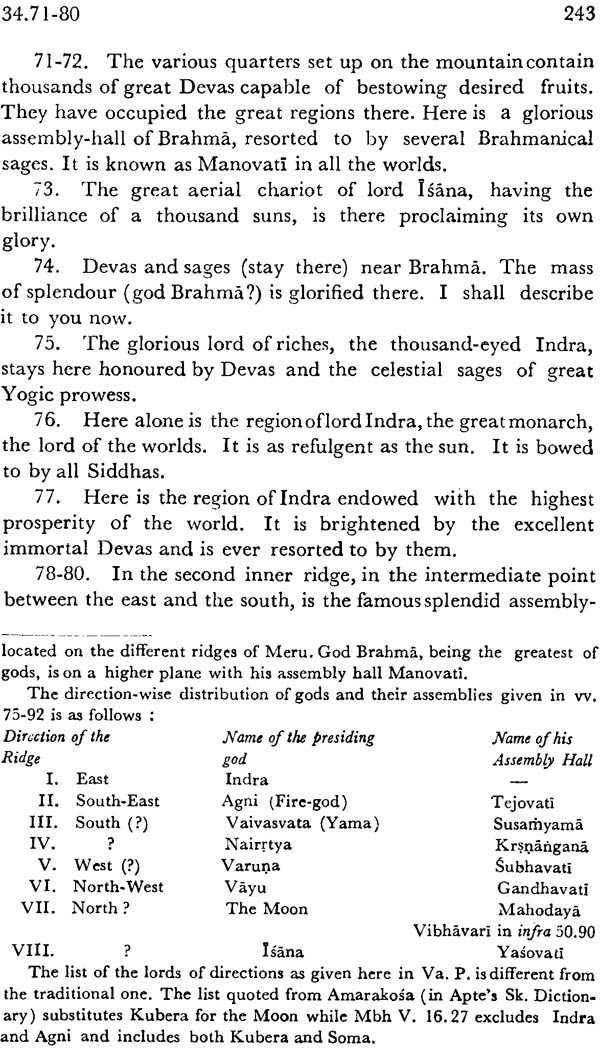
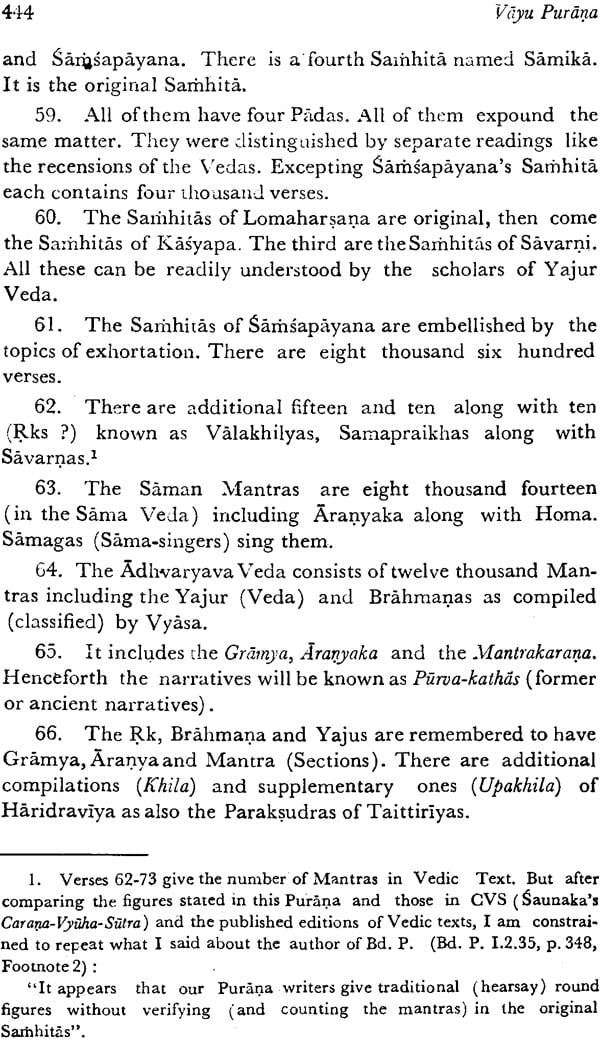


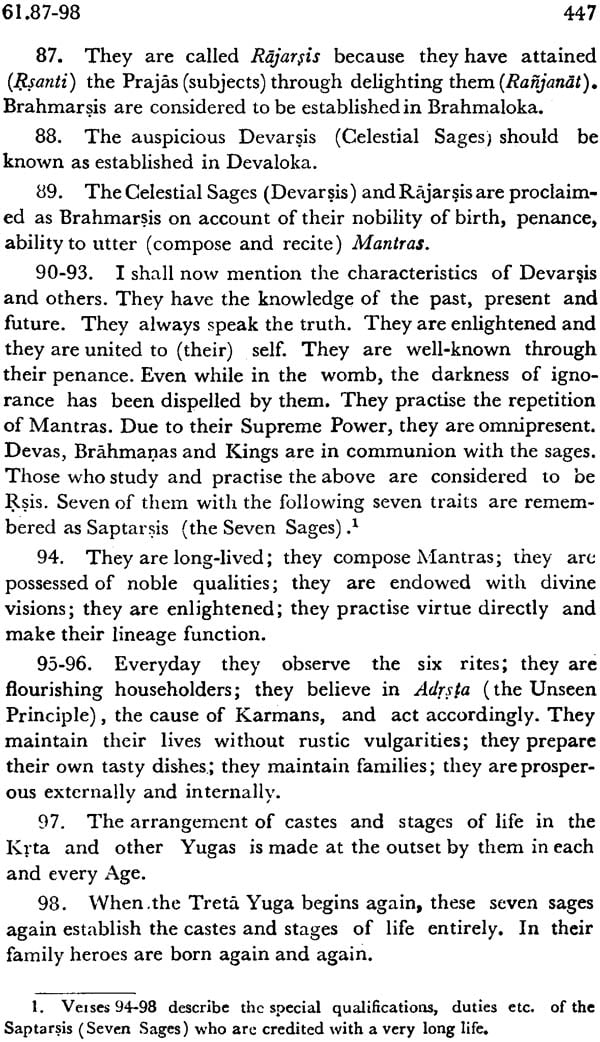

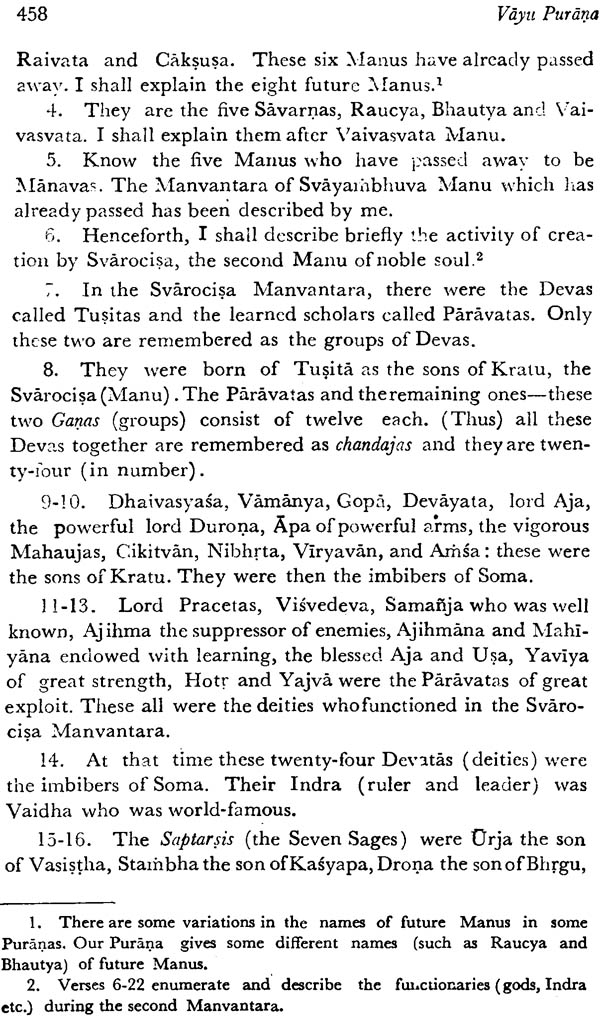
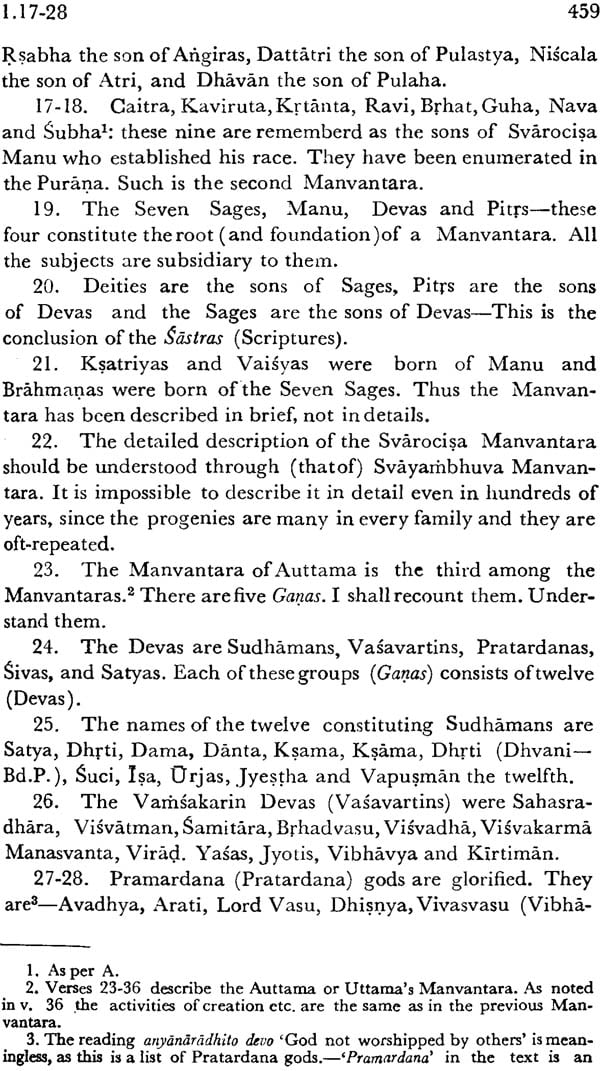
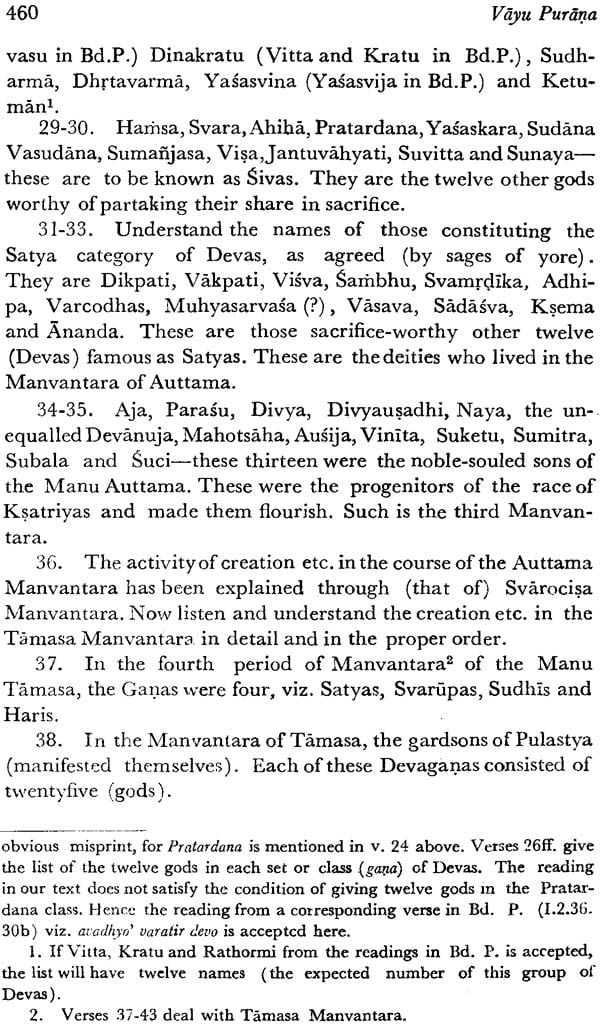
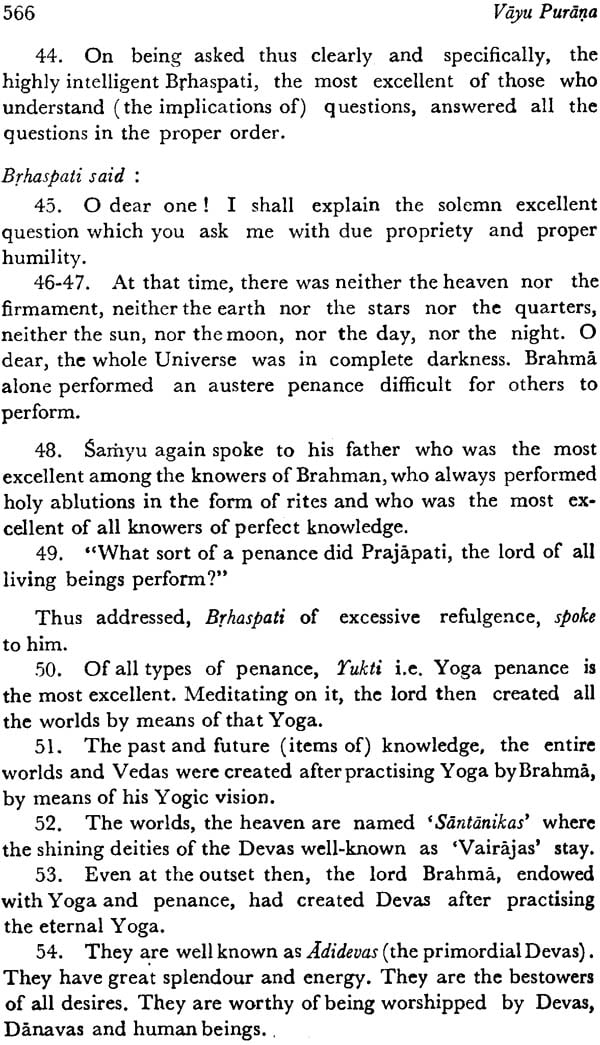
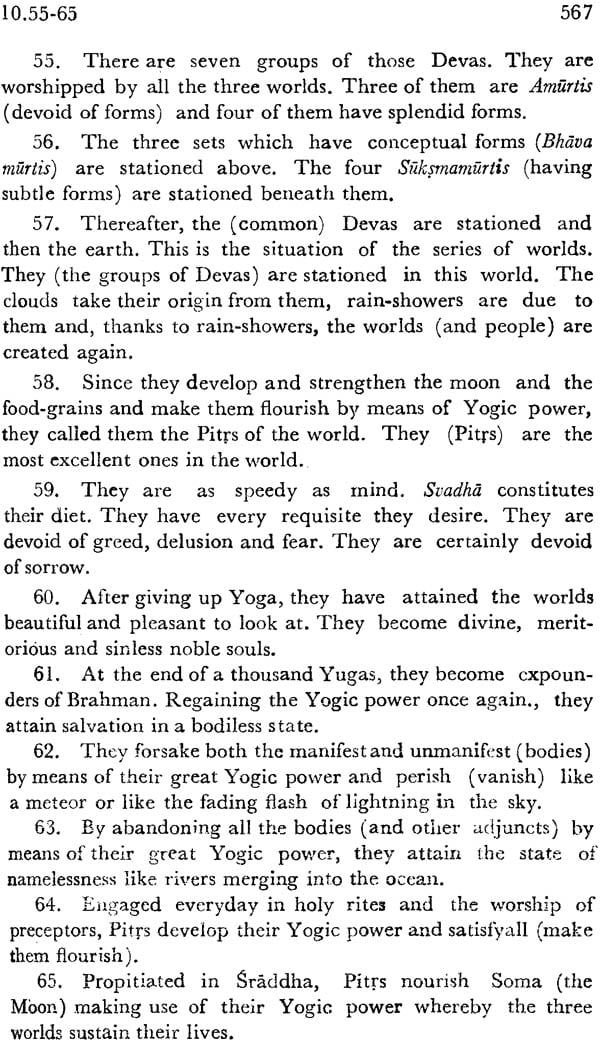
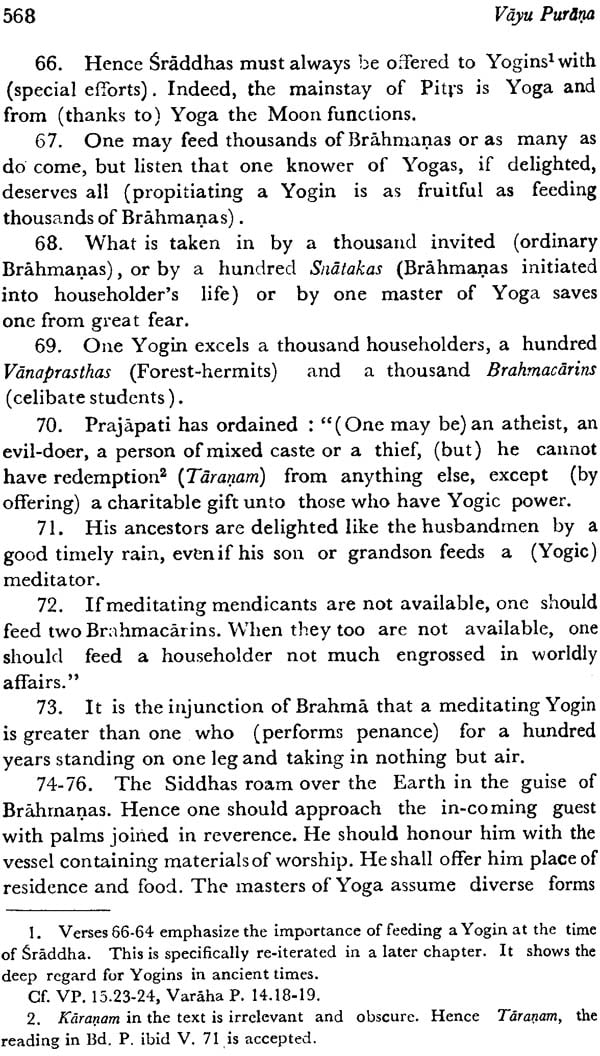
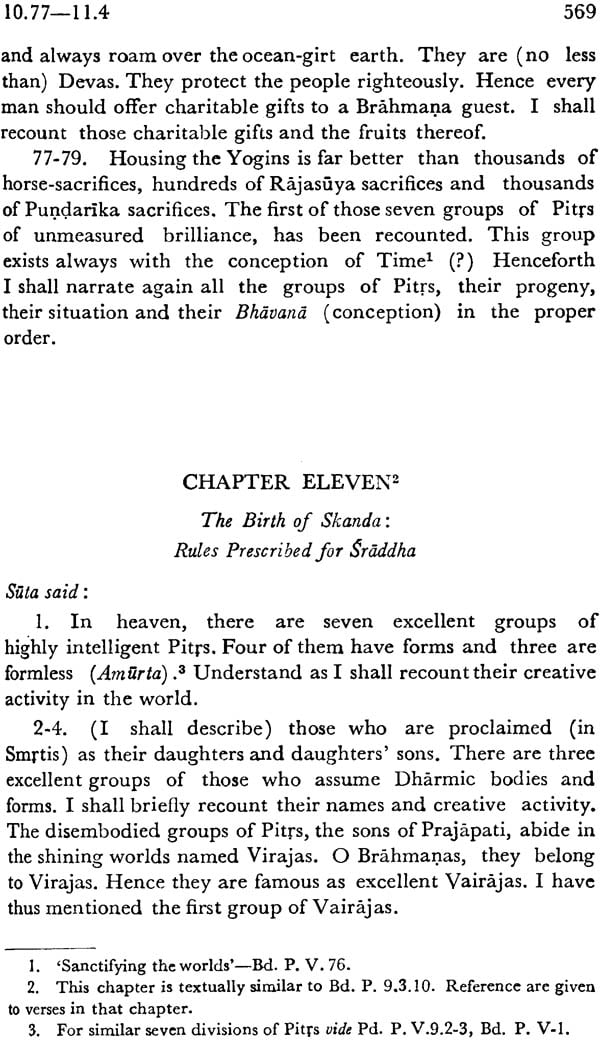
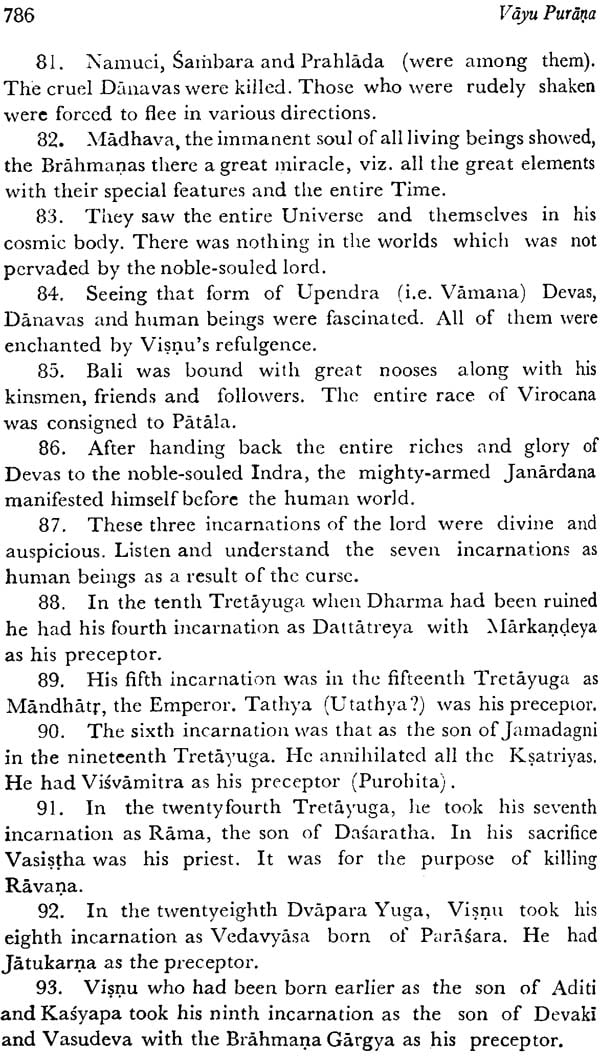
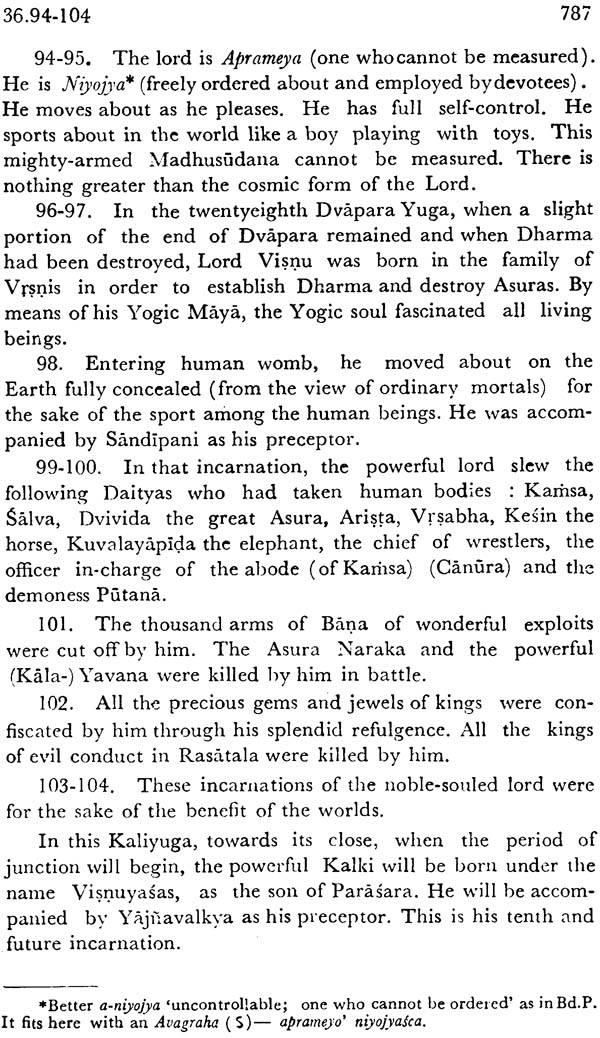
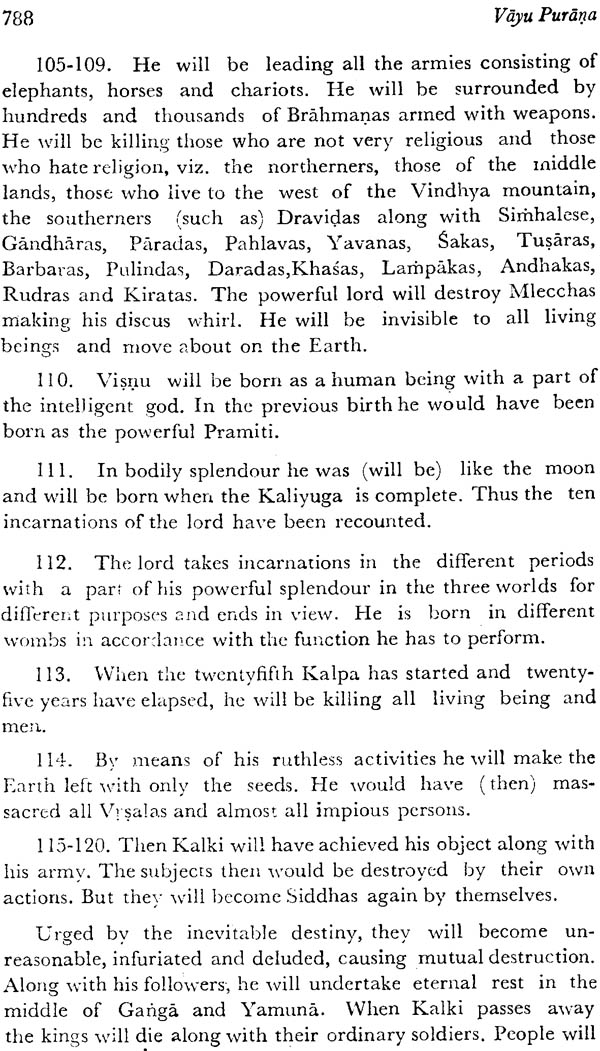
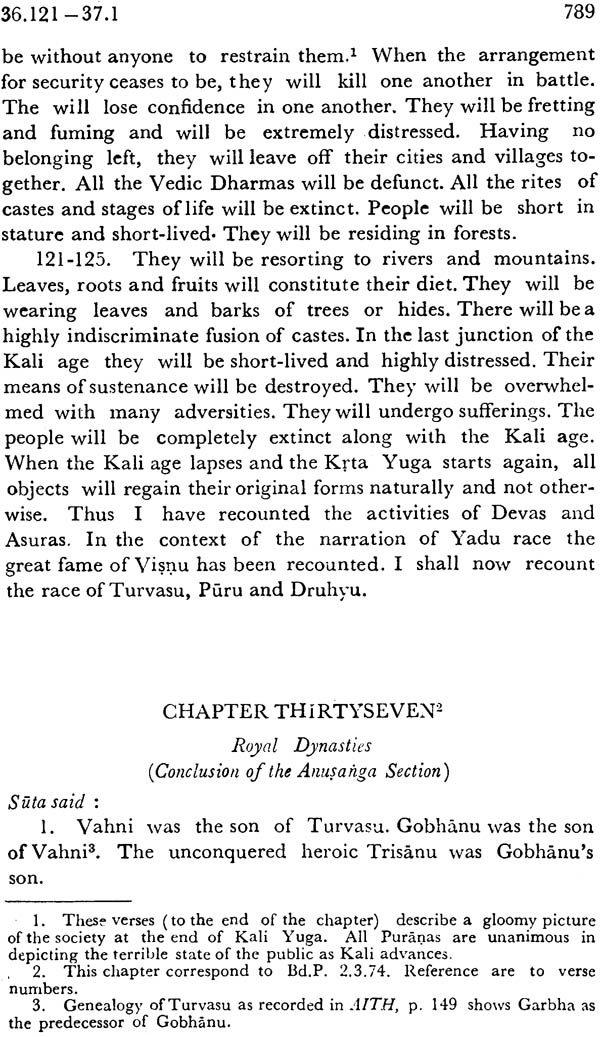
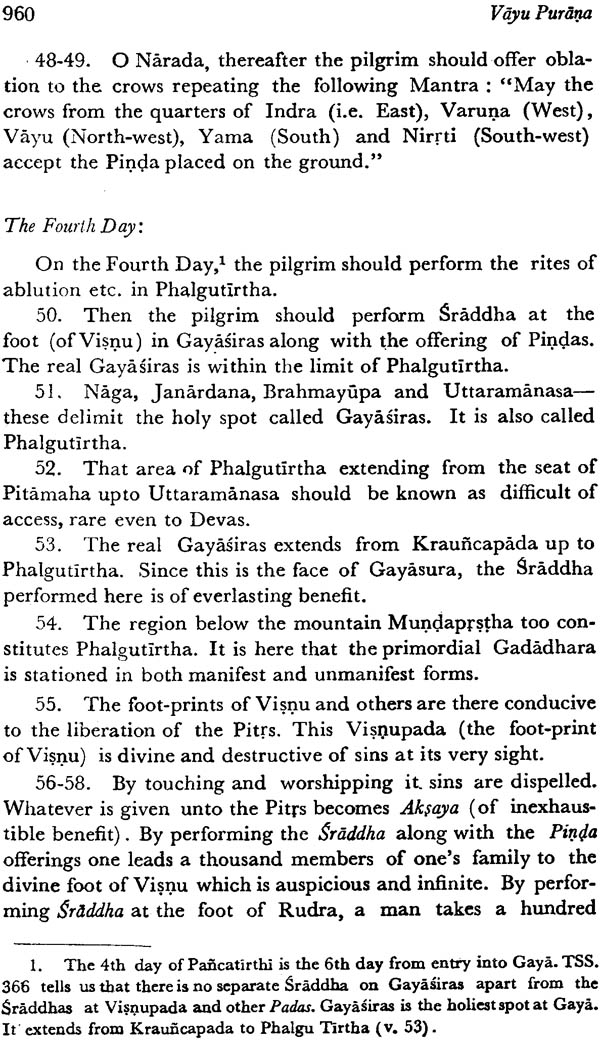
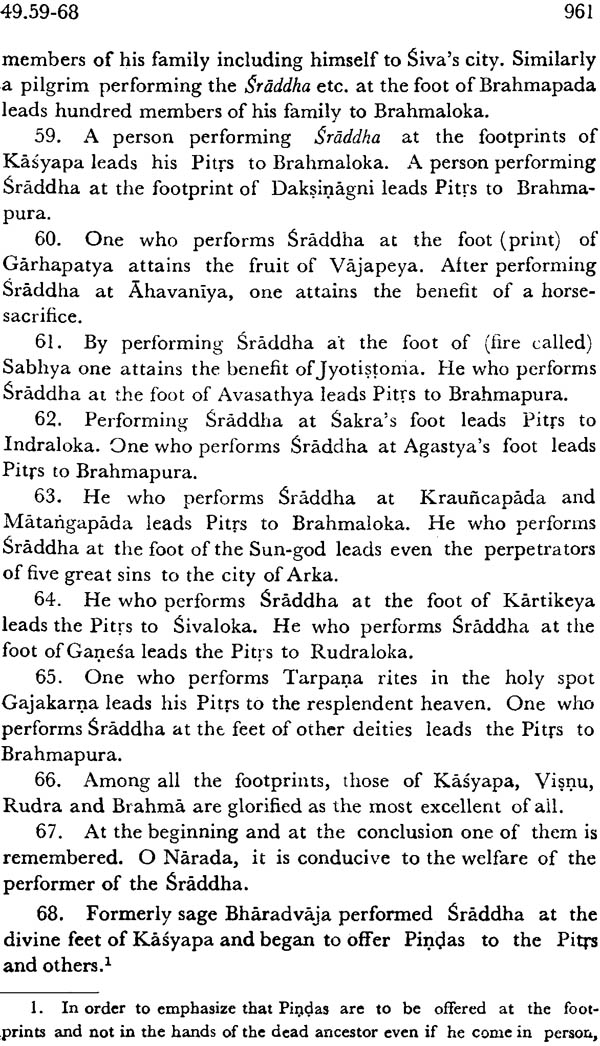
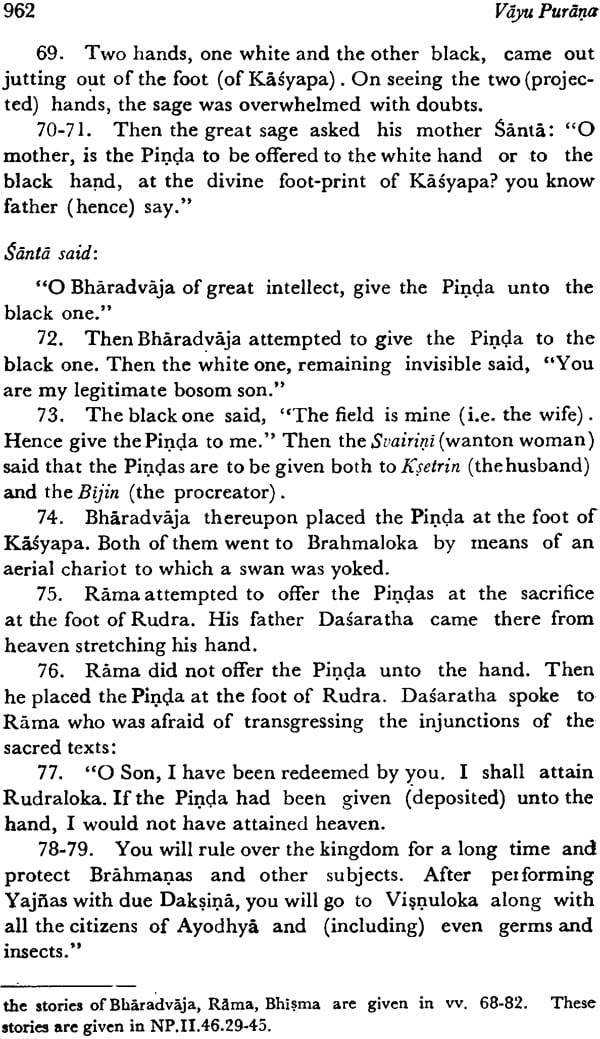
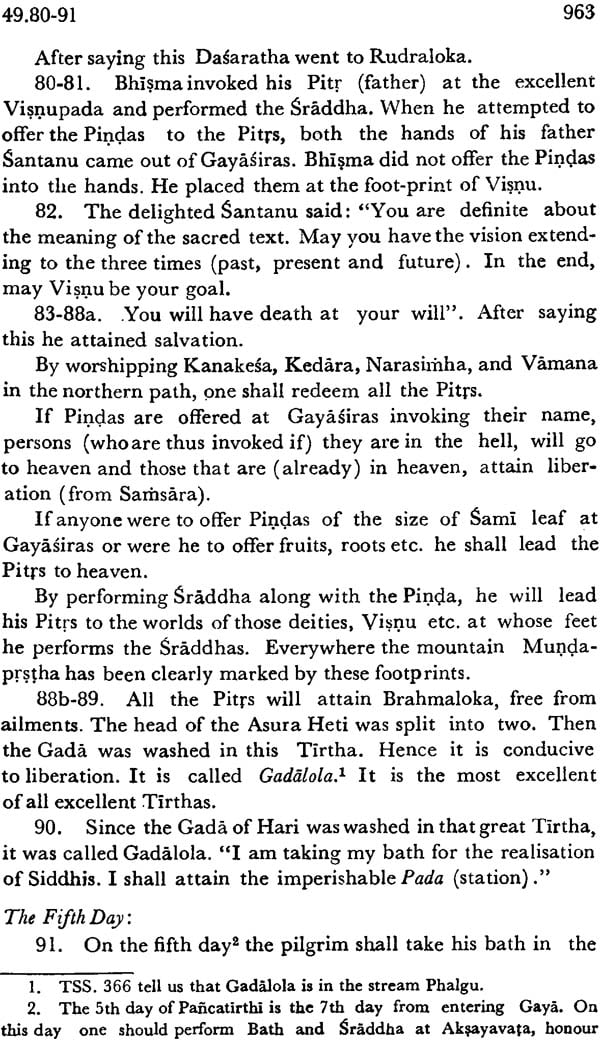
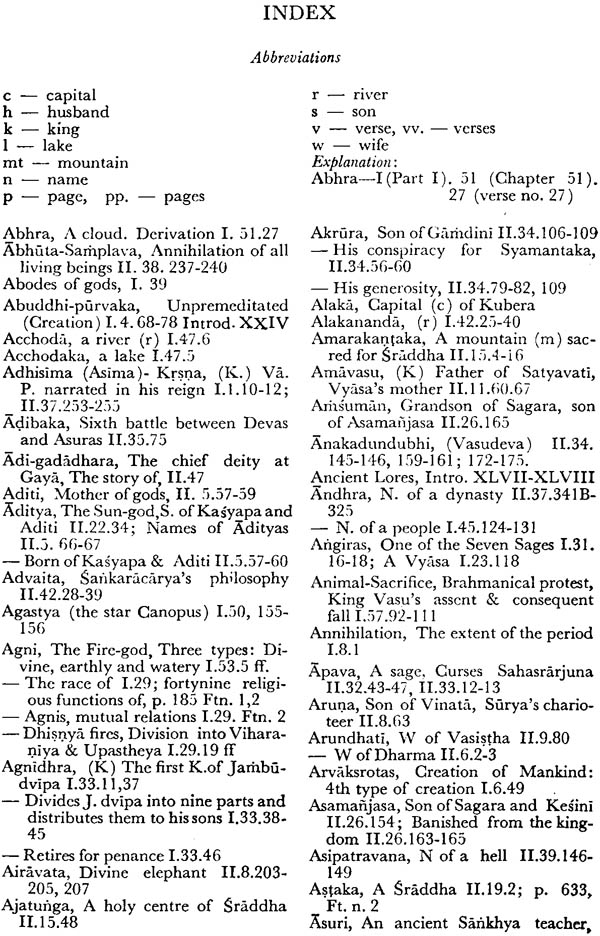
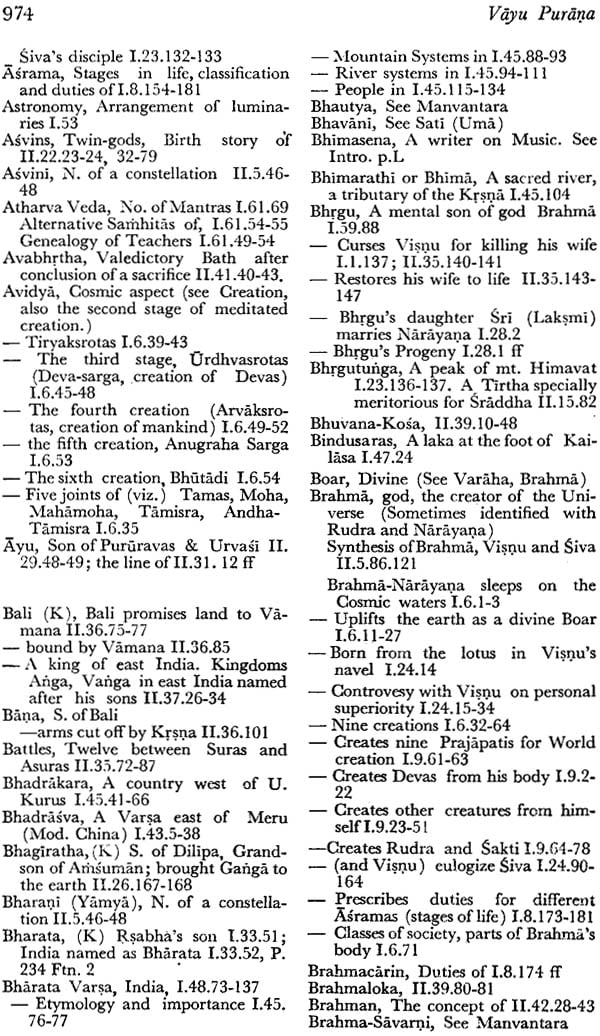
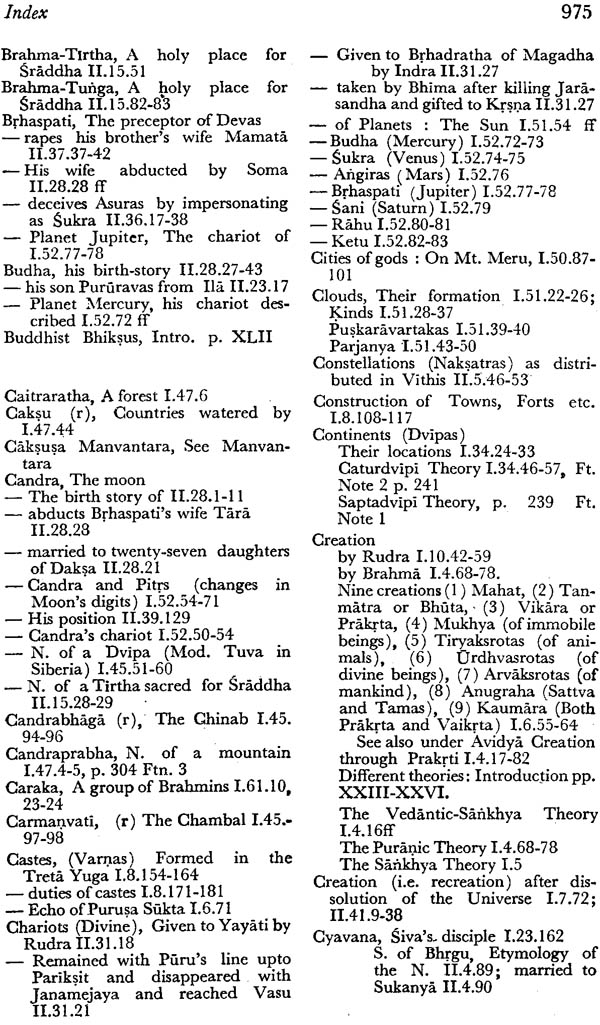
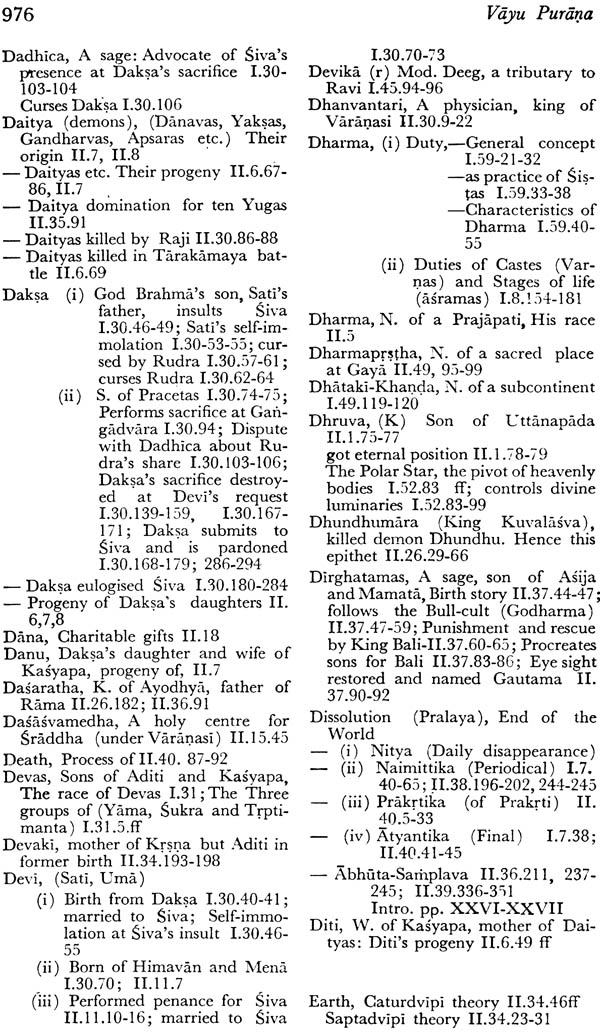
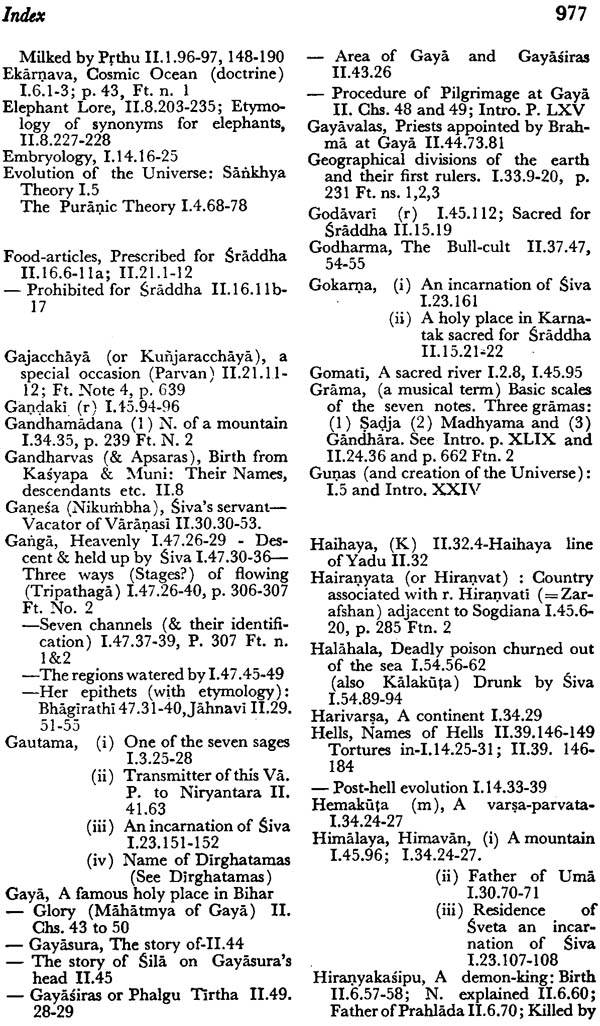
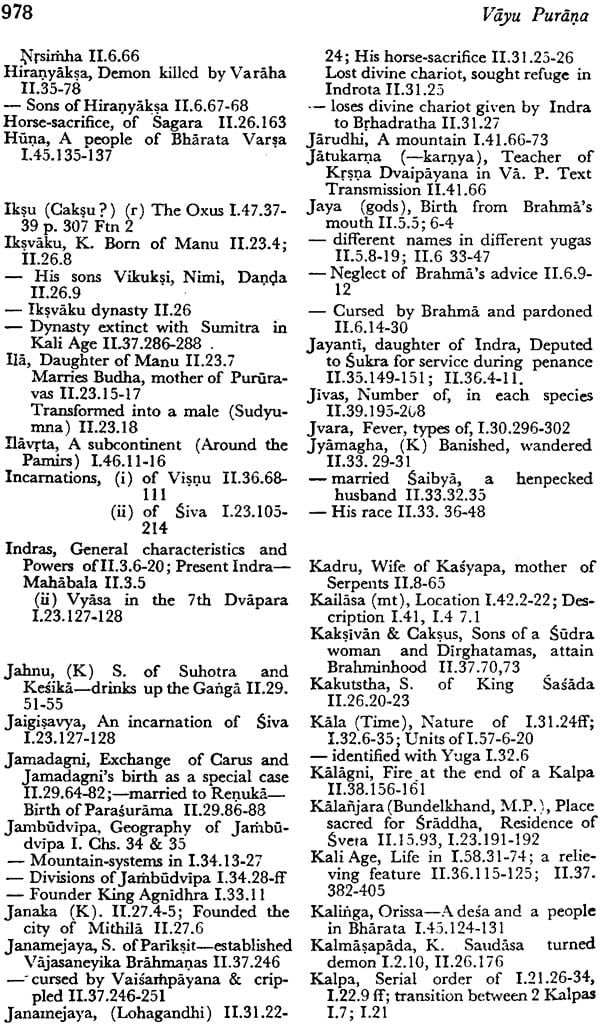
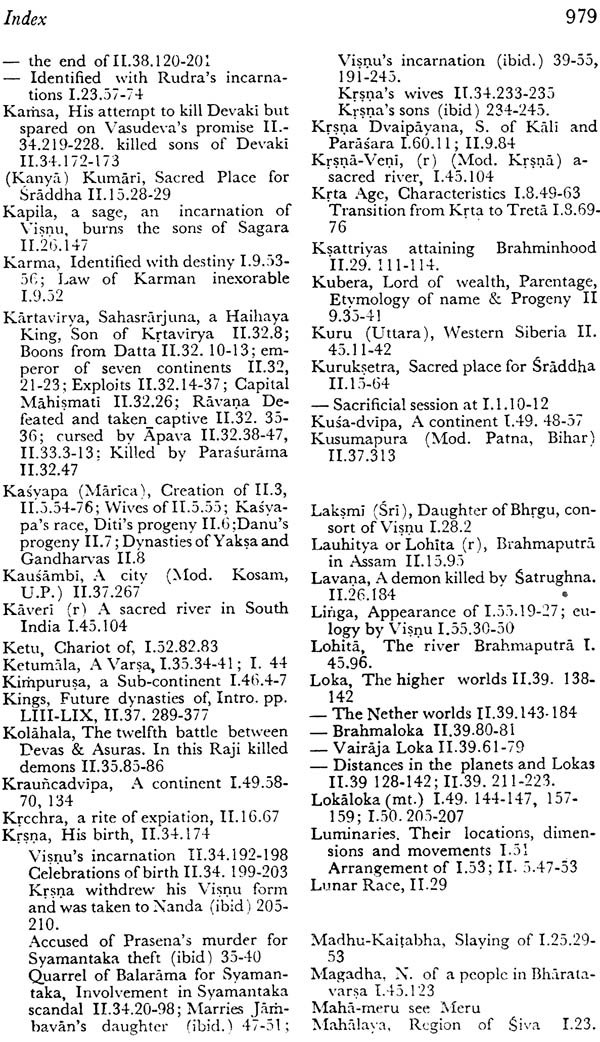
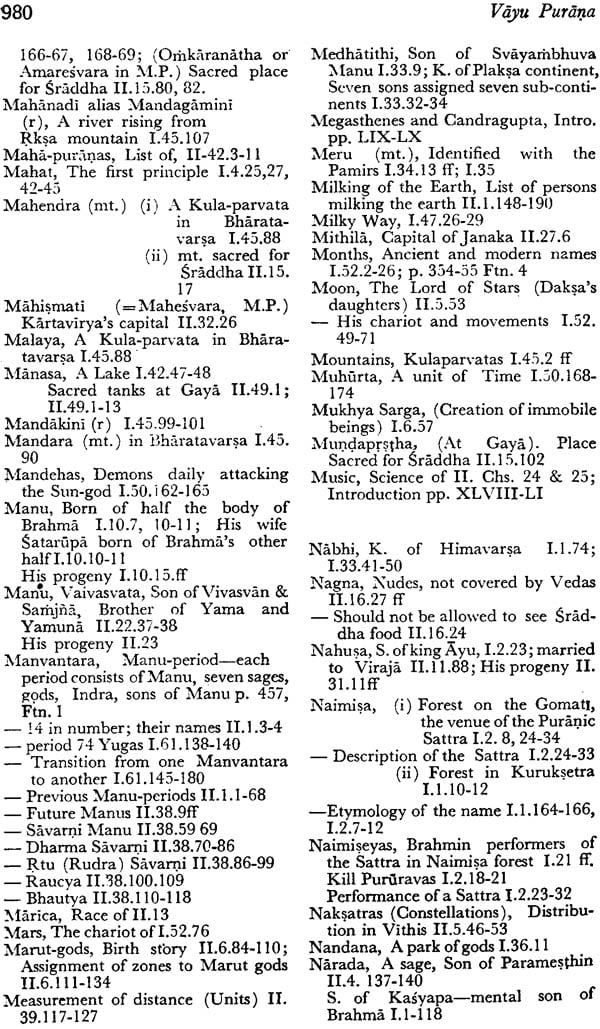
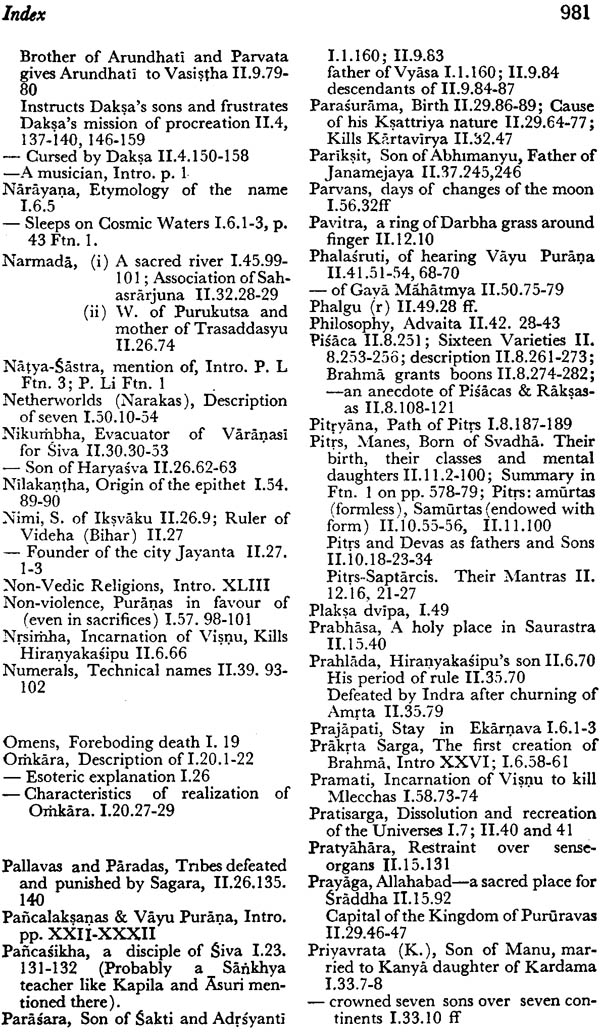
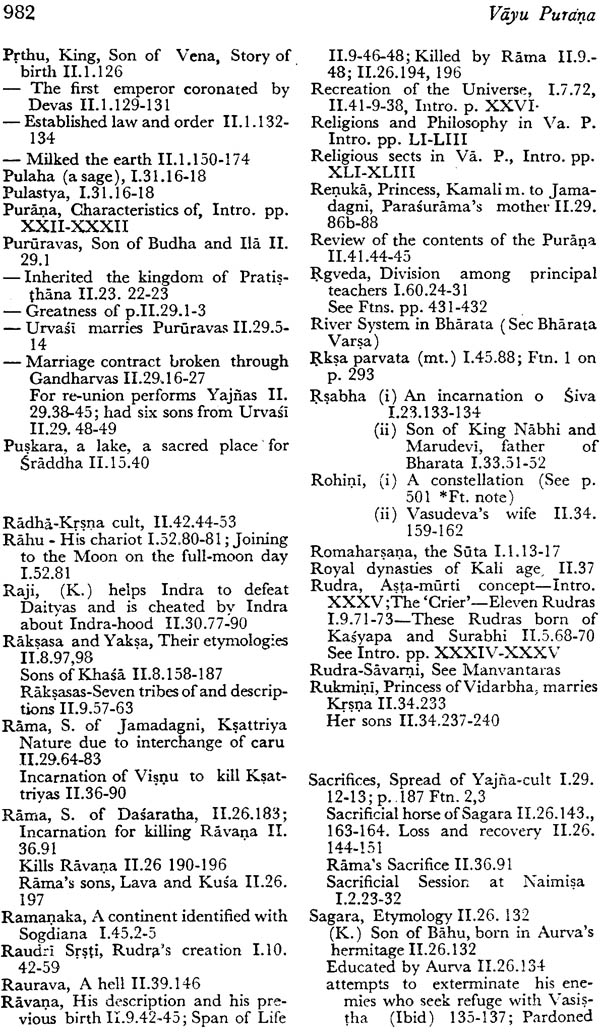
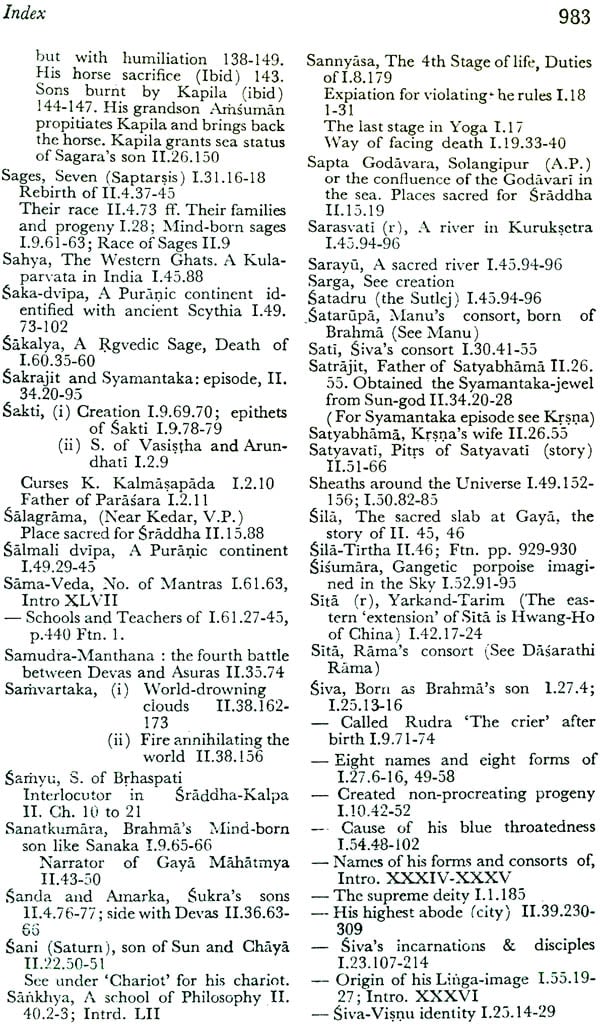
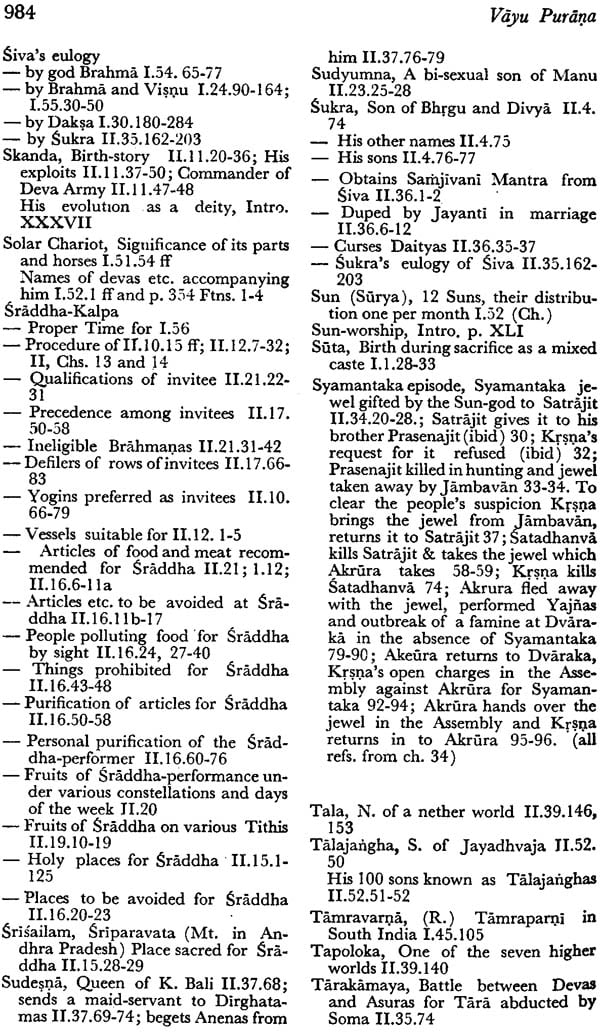
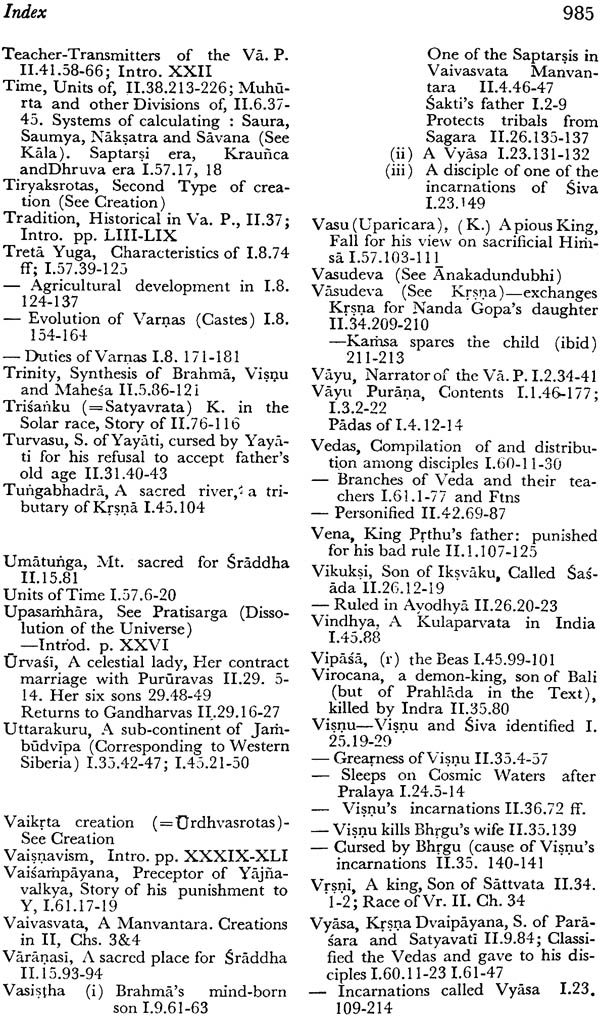
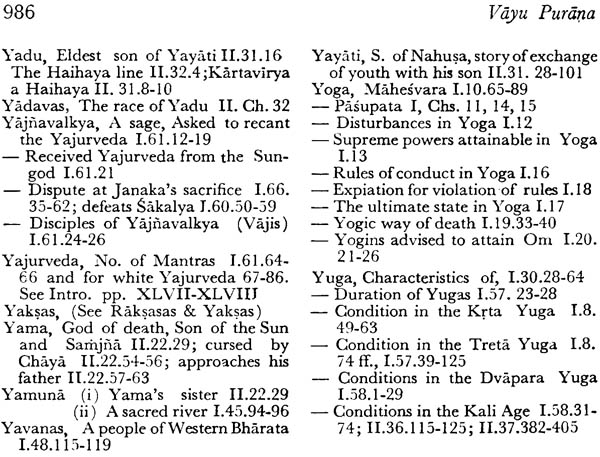
 to all international destinations within 3 to 5 days, fully insured.
to all international destinations within 3 to 5 days, fully insured.




